Technology
Easy ways to make calls when vision is a challenge

‘CyberGuy’: New technology bears fruit
The first indoor vertical berry farm opens in Virginia, uses AI to grow 4 million pounds annually. Tech expert Kurt Knutsson takes a closer look at the “growing” trend.
Technology can be wonderfully convenient and provide a great deal of entertainment, but it can also be a great way to improve your everyday life, too. For those who experience visual challenges, a variety of apps and features can help you. That’s why we love this question about apps and features that can help visually challenged loved ones:
“I am not tech savvy. I need to know if there is an app that I can download on a phone, that will allow my mother to tell the app, without needing internet services, who she wants to make a phone call to? She’s losing her eyesight and can no longer see the numbers on her phone. She’s 88 years old and doesn’t own a computer and has limited income,” writes “Sheryl” of Westminster, Colorado.
It’s great that you are looking out for your mother’s specific needs. Below are several voice dialing apps and features that can help her make calls without having to see the numbers.
GET SECURITY ALERTS, EXPERT TIPS – SIGN UP FOR KURT’S NEWSLETTER – THE CYBERGUY REPORT HERE
A woman using voice features to make a call (Kurt “CyberGuy” Knutsson)
Best apps and features for the visually challenged to make calls
As long as the numbers are already programmed into your phone, you can use some of these apps and features to call out even if you’re visually challenged.
Apps and features for iPhone
For apps and features that work specifically on the iPhone to enhance capabilities for the visually challenged, check out the options below:
1. Siri (iOS): If you have an iPhone, you can use Siri to make phone calls by simply saying, “Hey Siri, call [contact name].” However, if you prefer or if “Hey Siri” isn’t enabled, you can also press and hold the side button (or the Home button on older iPhones) to activate Siri manually. Siri can work offline for basic tasks like making phone calls. You’ll also want to check out how to get your phone to read articles aloud.
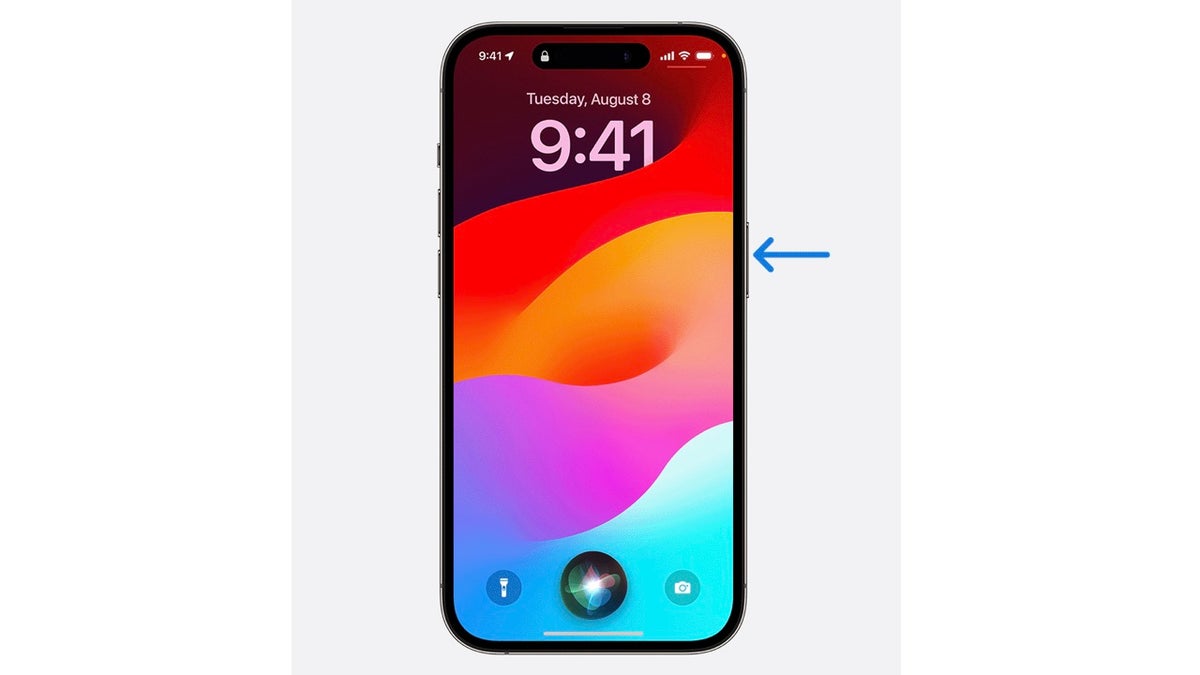
SIMPLE IPHONE HACK MAKES READING EVERY APP EASIER
2. Point and Speak feature: With iPhones that have a Lidar sensor and run iOS 17 or later, you can use the “Point and Speak” feature using the steps below:
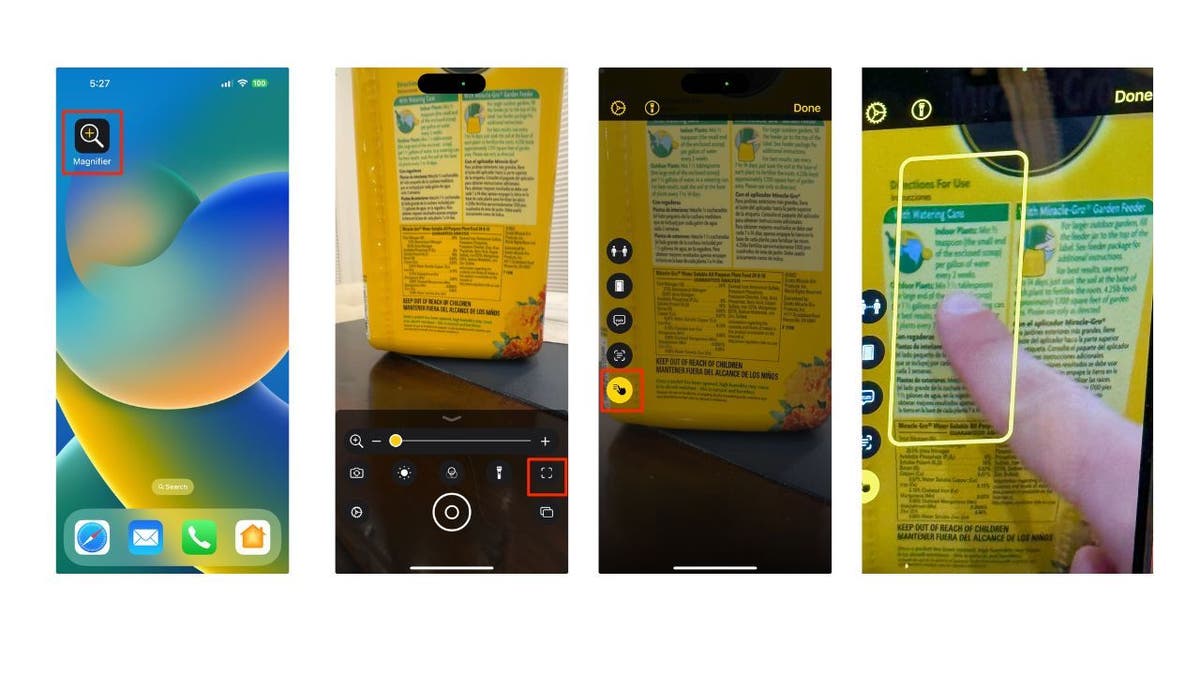
“Point and Speak” feature on iPhone (Kurt “CyberGuy” Knutsson)
- Open the Magnifier app on your iPhone. You can find it in the Utilities folder by searching for it in Spotlight or swiping down from the top right of your screen.
- Tap the Detect mode icon in the bottom right corner. It looks like a square with a circle inside it.
- Tap the Point and Speak icon in the bottom left corner. It looks like a hand pointing to three lines.
- Hold your iPhone about 12 inches away from the text you want to read and point the camera at it.
- Use your other hand to point at the text you want your iPhone to speak. Your iPhone will highlight the text in yellow and read it aloud.
- If you don’t hear the speech feedback, click the circular gear icon on the upper left of the screen. Then click Point and Speak and make sure Speech is toggled on. Then click the left arrow Back buttons in the upper left and tap Done.
AIRPODS PRO 2 VS. A CUTTING-EDGE HEARING AID: WHICH ONE OFFERS BETTER SOUND?
3. VoiceOver (iOS): This is an accessibility feature built into iPhones that provides spoken feedback to help users navigate their devices. It can be used in conjunction with Siri to make phone calls. Here are the steps:
- Open Settings: Tap on the Settings app on the home screen.
- Go to Accessibility: Scroll down and tap on Accessibility.
- Enable VoiceOver: Under the Vision section, tap on VoiceOver and then toggle the switch to turn it on.
- Once VoiceOver is enabled, you can use it to navigate your iPhone with spoken feedback. To make a phone call using Siri with VoiceOver enabled, you can follow these steps: 1) Activate Siri: You can either say “Hey Siri” or press and hold the Home button (or the Side button on newer iPhones) until Siri activates; 2) Give the Command: You can then say, “Call [contact name].”
- VoiceOver will provide spoken feedback throughout the process, making it easier for you to navigate and confirm actions.
CLICK HERE FOR MORE US NEWS
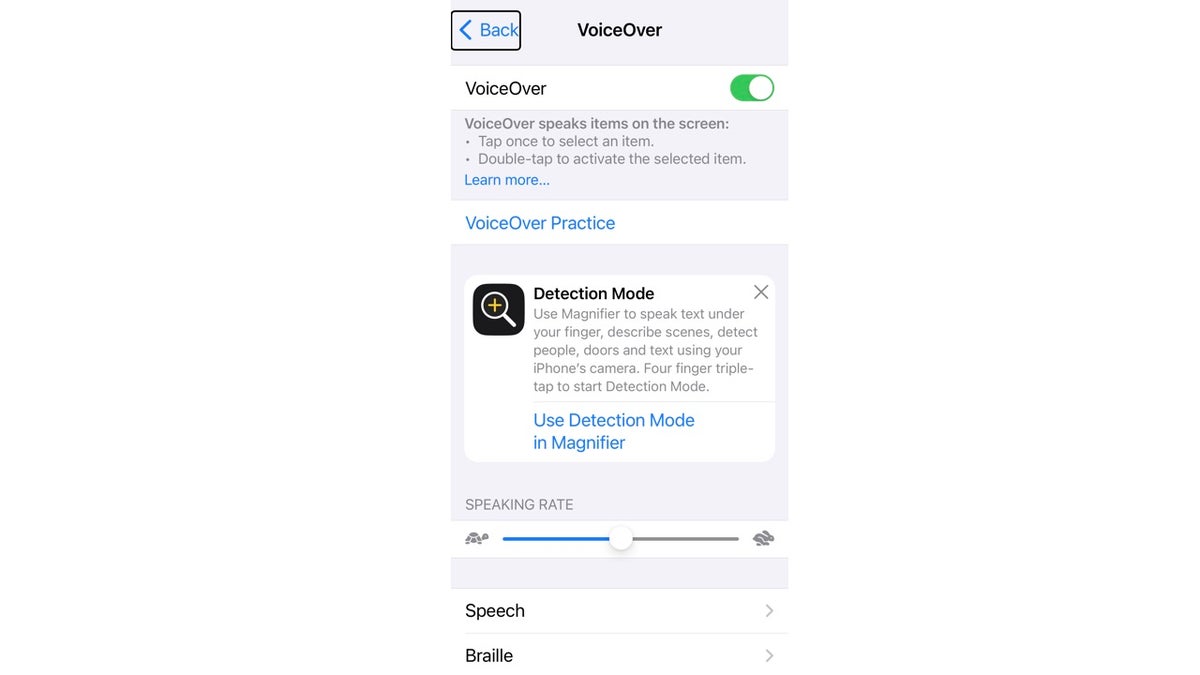
Voiceover feature on iPhone (Kurt “CyberGuy” Knutsson)
Apps and features for Android
For apps and features that work specifically for an Android to enhance capabilities for the visually challenged, check out the options below:
1. Google Assistant (Android): Similar to Siri, Google Assistant can be used on Android phones to make calls. You can do this by saying “Hey Google” or by holding down the home button on your phone. Once Google Assistant is activated, you can say commands like:
- “Call [contact name]” to call someone in your contacts
- “Call [business name]” to call a business
- “Call [phone number]” to dial a specific number
Additionally, Google Assistant can perform various tasks offline, such as setting reminders, playing music or sending texts. Just give it a try and see how it can make your daily tasks easier.
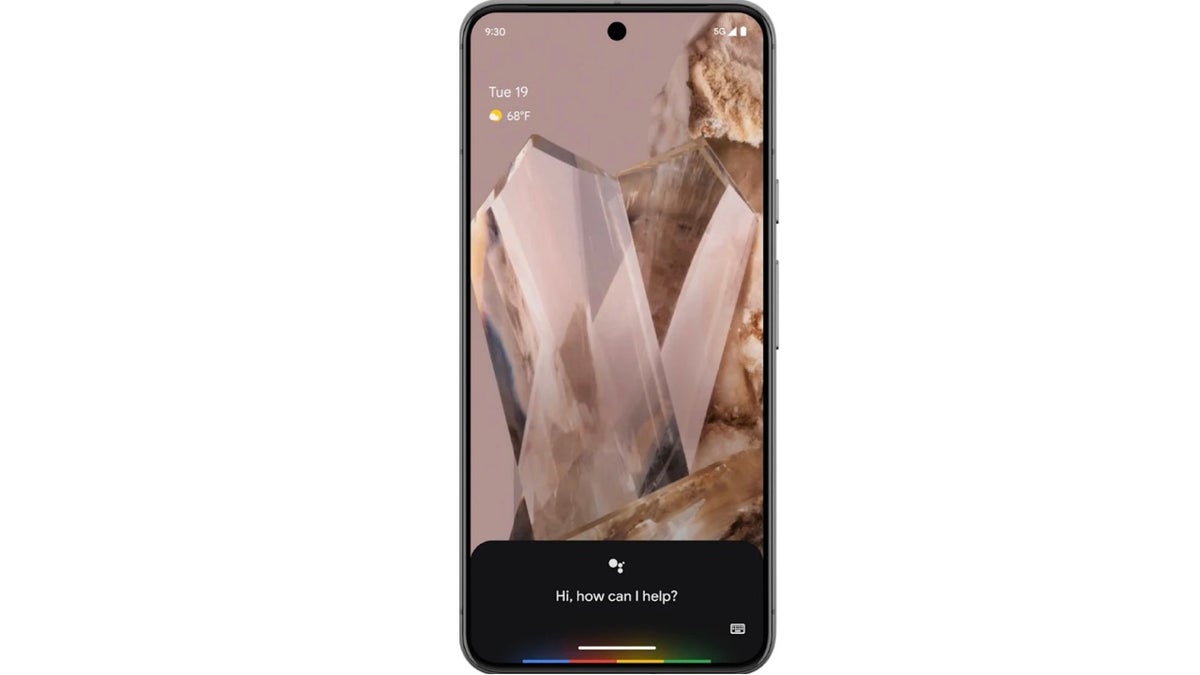
Google Assistant on Android (Google)
8 ACCESSIBILITY TIPS TO MAKE LIFE EASIER USING YOUR ANDROID
2. Voice Access (Android): This app lets you control your phone using voice commands. It can be particularly helpful for those with visual impairments. Once set up, you can use voice commands to make calls.
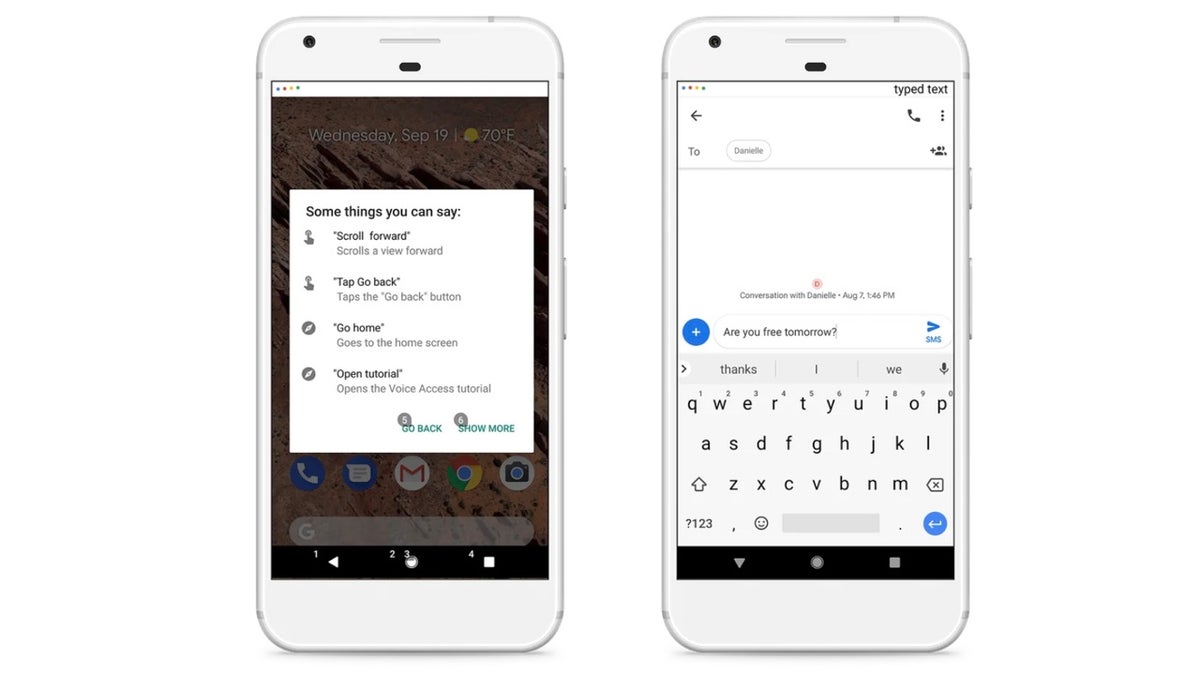
Voice Access on Android (Google Play)
- Unlock your Android device, then open your device’s Settings app.
- Select Accessibility
- Select Voice Access
- Select Use Voice Access
- Start Voice Access in one of these ways: 1) If “Hey Google” detection is on, you can say, “Hey Google, Voice Access”; 2) Open your notification shade and select Touch to start; 3) On your Home screen, tap the Voice Access app; 4) Select the Voice Access activation button. (Need to set up the activation button? Go to Settings > Accessibility > Voice Access > Settings > Activation button.)
- Say a command, such as “Open Gmail”
CAN’T HEAR OR SEE WELL? IPHONE SETTINGS TO MAKE HEARING AND SEEING EASIER
Kurt’s key takeaways
The technological advancements in modern mobile phones can really improve the ability of those with visual impairments to utilize technology to the fullest. After all, if you can’t utilize the standard features to call out on your mobile device, it fails to achieve its most basic function. Between the ability of Siri, Google Assistant or other voice-activated apps to respond to verbal commands (with a simple click of a button or verbal request) to the accessibility features’ ability to help verbally navigate your phone, even those experiencing visual challenges can optimize the power of their phones and stay in touch with their loved ones.
Most people have heard of Siri or Google Assistant, but have you taken advantage of the Voice Access app or VoiceOver features? What accessibility features have come in both handy and absolutely necessary for staying in touch with your loved ones? Let us know by writing us at Cyberguy.com/Contact.
For more of my tech tips and security alerts, subscribe to my free CyberGuy Report Newsletter by heading to Cyberguy.com/Newsletter.
Ask Kurt a question or let us know what stories you’d like us to cover.
Follow Kurt on his social channels:
Answers to the most asked CyberGuy questions:
New from Kurt:
Copyright 2024 CyberGuy.com. All rights reserved.

Technology
Apple’s latest AirPods are already on sale for $99 before Prime Day

Amazon Prime Day kicks off tomorrow, July 8th, but you don’t have to wait until then to pick up Apple’s latest pair of AirPods at a discount. Right now, the AirPods 4 are available for around $99 ($30 off) at Amazon, Best Buy, and Walmart, while the AirPods 4 with noise cancellation are going for around $149 ($30 off) at Amazon, Best Buy, and Walmart. That’s within $10 of the lowest price we’ve seen on the ANC model and matches the lowest price to date on the base pair.
Both versions of Apple’s current-gen earbuds feature shorter stems and larger buds than previous models, allowing them to accommodate a broader range of ear shapes. The open-style earbuds use a hard plastic body that doesn’t create a tight seal inside your ear, which means they sacrifice some bass response compared to gummy-tipped earbuds. Hardshell earbuds won’t create pressure in your ear, though, which can feel uncomfortable after listening to music for a few hours.
Overall, the fourth-gen AirPods sound better than previous models due to a custom amplifier and new acoustic architecture. Audio quality is somewhat subjective and largely depends on how the music was recorded, mixed, and mastered; however, former Verge staffer Chris Welch noted in his review that he was pleased with the sound of Apple’s latest pair of wireless earbuds. If you’re upgrading from an older pair, you’ll notice a difference.
The AirPods 4 run on Apple’s H2 chip, which is required for Voice Isolation, a feature that reduces background noise and amplifies the volume of your voice during calls. If you’re using an iPhone, you can say “Hey Siri” to evoke Apple’s smart assistant to place calls, hear and return messages, and play music. You can also locate the earbuds using the Find My app on Apple devices if they’re misplaced.
The entry-level model can last up to five hours on a single charge and can be fully charged five times using the included USB-C charging case (the ANC model also offers wireless charging). Both pairs of earbuds are also IP54-rated for dust, sweat, and water resistance, ensuring you can wear them safely during workouts. Needless to say, the AirPods 4 are excellent earbuds at their current price, whether you opt for the model with active noise cancellation or not.
Three more deals worth your time
Technology
How micro-robots may soon treat your sinus infections
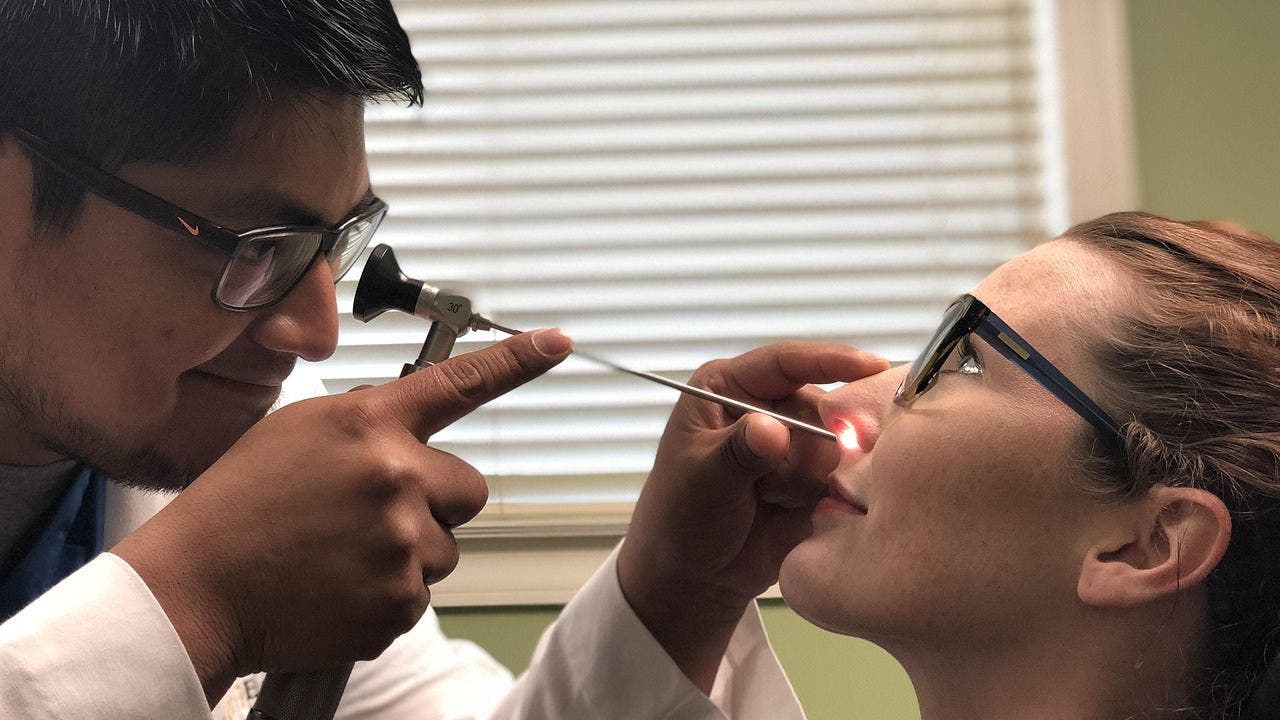
NEWYou can now listen to Fox News articles!
A breakthrough in medical technology could soon change how sinus infections are treated. Scientists have created micro-robots for sinus infection treatment that can enter the nasal cavity, eliminate bacteria directly at the source, and exit without harming surrounding tissue. This drug-free, targeted approach may reduce our dependence on antibiotics.
Sign up for my FREE CyberGuy Report
Get my best tech tips, urgent security alerts, and exclusive deals delivered straight to your inbox. Plus, you’ll get instant access to my Ultimate Scam Survival Guide – free when you join my CYBERGUY.COM/NEWSLETTER.
A woman with a sinus infection. (Kurt “CyberGuy” Knutsson)
What are micro-robots for sinus infection treatment?
These microscopic robots are smaller than a speck of dust. They are made of magnetic particles enhanced with copper atoms. Doctors insert them through a narrow duct in the nostril. Once inside, the micro-robots are guided by magnetic fields to reach the infected area.
At that point, a fiber optic light heats the particles and triggers a chemical reaction. This reaction breaks through thick mucus and destroys harmful bacteria at the infection site. As a result, treatment becomes faster, more precise, and far less invasive.
This latest advancement comes from a collaboration of researchers at the Chinese University of Hong Kong, along with universities in Guangxi, Shenzhen, Jiangsu, Yangzhou, and Macau. Their work, published in “Science Robotics,” has helped move micro-robotic medical technology closer to real-world applications.
Why use micro-robots instead of antibiotics?
Traditional antibiotics circulate throughout the entire body. In contrast, micro-robots target only the infected area. This reduces side effects and lowers the risk of antibiotic resistance. Furthermore, patients may recover faster because the treatment goes straight to the source.

A woman with a sinus infection. (Kurt “CyberGuy” Knutsson)
Are micro-robots safe?
So far, animal trials have shown promising results. Micro-robots successfully cleared infections in pig sinuses and live rabbits, without causing tissue damage. However, scientists still need to ensure that every robot exits the body after treatment. Leftover particles could pose long-term risks.
In addition, public acceptance remains a challenge. The idea of tiny machines inside the body makes some people uncomfortable. Nevertheless, experts believe those fears will fade over time.
What other uses are possible?
Researchers are already exploring how micro-robots could treat infections in the bladder, stomach, intestines, and bloodstream. Several teams around the world are working to make the technology more advanced and adaptable for deep internal use. If successful, these innovations could revolutionize the way we fight bacteria in the human body.
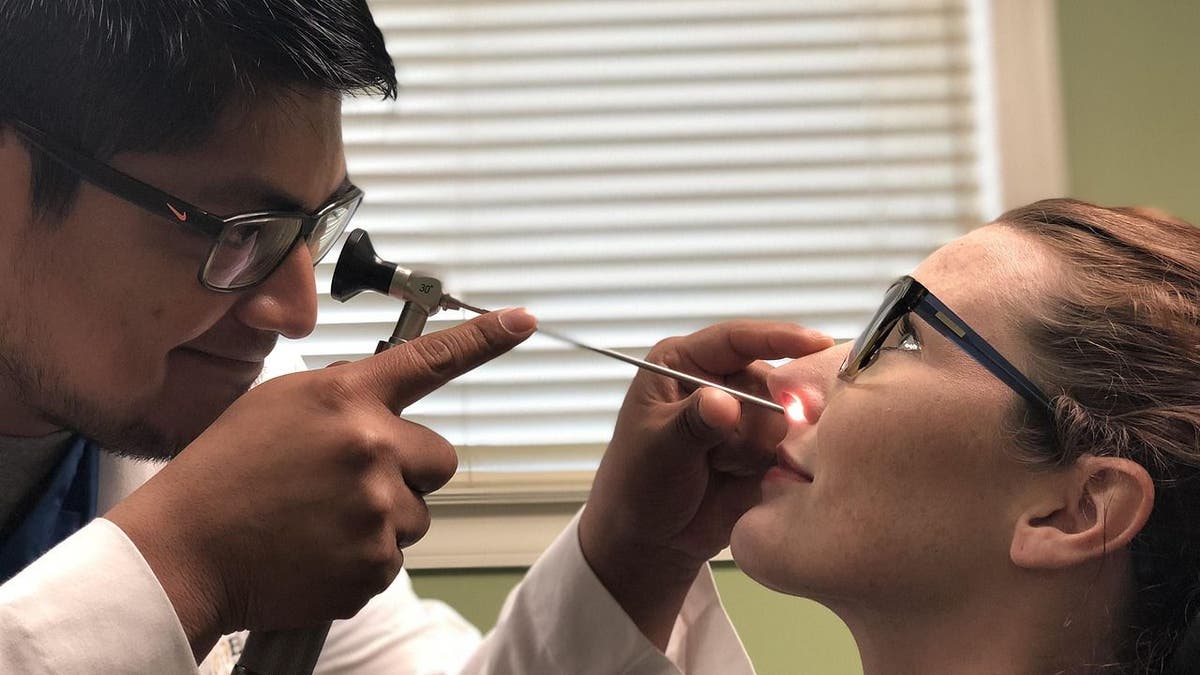
A doctor examining a woman with a sinus infection. (Kurt “CyberGuy” Knutsson)
Kurt’s key takeaways
The rise of micro-robots for sinus infection treatment marks a major shift in medical care. By offering precise, non-invasive therapy without antibiotics, this method could redefine how infections are treated. With continued research and testing, these tiny tools may soon become powerful allies in modern medicine.
Would you let microscopic robots crawl through your sinuses if it meant never needing antibiotics again? Let us know by writing to us at Cyberguy.com/Contact.
Sign up for my FREE CyberGuy Report
Get my best tech tips, urgent security alerts, and exclusive deals delivered straight to your inbox. Plus, you’ll get instant access to my Ultimate Scam Survival Guide – free when you join my CYBERGUY.COM/NEWSLETTER.
Copyright 2025 CyberGuy.com. All rights reserved.
Technology
Cyberpunk Edgerunners 2 will be even sadder and bloodier

The new season will be directed by Kai Ikarashi, who also directed episode six in the first season, “Girl on Fire.” There’s no word yet on when Cyberpunk: Edgerunners 2 will premiere, but they did show off this new poster artwork. A trailer will be shown later tonight during a panel at 8:30PM PT for the animation studio, Trigger.
Showrunner and writer Bartosz Sztybor said during Friday’s panel that for season one, “I just wanted to make the whole world sad… when people are sad, I’m a bit happy,” and that this new 10-episode season will be “…of course, sadder, but it will be also darker, more bloody, and more raw.”
A brief summary of the follow-up series tells fans what to expect following the end of David’s story in season one:
Cyberpunk: Edgerunners 2 presents a new standalone 10-episode story from the world of Cyberpunk 2077— a raw chronicle of redemption and revenge. In a city that thrives in the spotlight of violence, one question remains: when the world is blinded by spectacle, what extremes do you have to go to make your story matter?
-

 News1 week ago
News1 week agoHow Every Senator Voted on the Iran War Powers Resolution
-

 Politics1 week ago
Politics1 week agoTrump's 'big, beautiful bill' faces Republican family feud as Senate reveals its final text
-

 Technology1 week ago
Technology1 week agoFacebook is starting to feed its Meta AI with private, unpublished photos
-

 Health1 week ago
Health1 week agoWhy Mariah Carey Doesn’t Use a Scale After Her 70-Lb Weight Loss
-
World1 week ago
Tech industry group sues Arkansas over new social media laws
-

 News1 week ago
News1 week agoWhat is birthright citizenship and what happens after the Supreme Court ruling?
-

 Business1 week ago
Business1 week agoCalifornia lawmakers approve expanded $750-million film tax credit program
-

 Science1 week ago
Science1 week agoAfter U.S. and Israeli Strikes, Could Iran Make a Nuclear Bomb?













